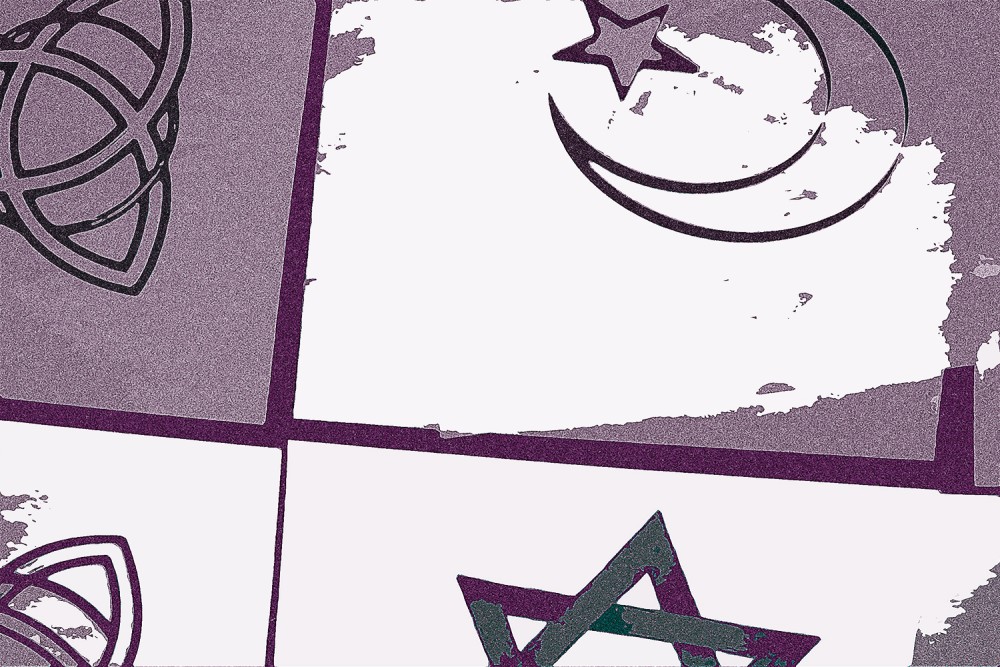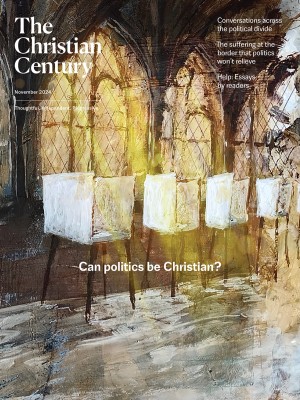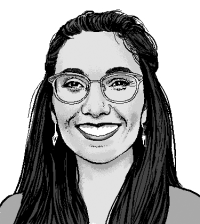The gift of interfaith difference
At the Muslim community center, I felt the tension of our divergence. But I also sensed gratitude.

(Century illustration)
A group from my church recently visited a local Muslim organization, founded to provide community and support for young Muslims in our city following a hate crime almost a decade ago in which a White man murdered three young Muslims here. On a rainy Wednesday, we drove to the Lighthouse Project office. We gathered in the prayer room to listen and learn. We wanted to know these neighbors better, to drink tea with them, and to hear their stories.
We also wanted to learn about Islam. A young man who volunteers for the Lighthouse Project offered us an introduction to his faith. He flipped through slides, telling us about the five pillars and his feat of memorizing the Qur’an as a child. We asked questions and heard stories about the hajj. The next slide outlined the characteristics of God, including the words from Surah 17:111, “He has not begotten a son and has no partner in His Kingdom.”
Read our latest issue or browse back issues.
The polemic popped off the screen. I wondered if the words—written 300 years after the Nicene Creed declared Jesus “begotten not made” and “true God from true God”—were meant to help early Islam distinguish itself from the Christianity of the region. Seeing the words in black and white, I felt the tension of our divergence. But I also sensed gratitude.
When I talk about Judaism, Christianity, and Islam I use familial language. In the church we have older and younger cousins. At times we fight, sometimes bitterly. We have much in common, we can see the family resemblance when we stand side by side in front of a mirror. We disagree and, at our best, we cherish our robust specificity while extending the hand of friendship.
As both violent and subtle antisemitic and Islamophobic incidents are on the rise in the United States and Europe, I can understand the impulse to downplay difference in order to cultivate peace. Conclusions like “we all worship the same God” or “all religions are essentially the same” may offer hope that we can find a way toward a common humanity, sans religious difference.
But who decides which pieces of whose religion can be sloughed off? Which parts of our religious traditions are ancillary to the common ethics that supposedly underlie all of them? The problem in working out these questions is that for most of human history, people didn’t distinguish what we call belief from their everyday experience of life. And the idea that our religious identities are a hurdle for unifying humanity has a thorny history.
Historian Brent Nongbri explains that religion as a distinct category—a personal experience of faith that can be sectioned off from the rest of our lives—is a modern notion that emerged as European colonial powers attempted to distinguish and demarcate the cultures and peoples they intended to rule. As they engaged in territorial expansion, European missionaries, scholars, and officials classified the cultures they met along the way according to the distinctives of Christianity, even though the people they encountered drew no distinction between their gods and their economics, their beliefs and their bodies. These cultures often used the same language for rituals and communal organization. Colonial religious categorization ripped apart this cultural fabric.
In her book tracing the development of Judaism into a religion, Leora Batnitzky describes a similar trajectory as Enlightenment rationalism, coupled with pressures on Jews to assimilate to European society, forced Judaism into a religious box. “The idea that Judaism is a religion,” she writes, “separate from nationality and culture, is a modern invention. Prior to the modern period, Judaism encompassed all aspects of life, without the need for such distinctions.”
In a similar way, colonization in the Americas smashed apart the integrated systems of Indigenous life as colonizers deemed the Indigenous nations they encountered to be religiously substandard. Willie Jennings writes that by “naming Indigenous ways of life as religions, European colonizers were able to assert the superiority of Christianity, casting these practices as incomplete or misguided and in need of correction or replacement.” Categorization served the ends of control and domination, presenting Indigenous people as perpetually in need of eradication by conversion.
Today, when interfaith events bring people together, they often do so with the expectation that non-Christian traditions will fall in line with the order and program of Christian services and ritual patterns. Are there other ways to move forward together, without the violence of erasure?
To answer these questions, I’ve turned back to my Christian specificity. It is one thing to live at peace with those whom I’ve made manageable by reproducing them in my own image. It is quite another to live humbly and with curiosity before profound and irreconcilable difference. But that is the work of Christians who worship a crucified savior, the one who gave his body over to death. This central defining reality leaves no room for triumphalism. All that is left is to wonder and work within the mystery of our defenselessness.
Rowan Williams once told an interviewer that “interfaith dialogue shows you what someone else’s face looks like when turned to the God they believe in. It’s not an argument that someone has to win; it’s a conversation after which you are both (or all) aware of more to absorb and reflect on.” Williams describes this kind of interfaith work as not relativism but rather the “willingness to let the truth you are convinced about be probed and deepened by perspectives from elsewhere.”
I don’t need my Muslim neighbors at the Lighthouse Project to gloss over the differences between Muslims and Christians on the nature of Christ. I want their robust specificity: to learn about their nuances, to grapple with their internal differences and the ways their traditions have shifted, merged, and collided over the centuries. I want to walk with barefooted reverence on a mosque floor and to awe at the intricate geometric patterns of tile that adorn the walls. I want to wonder and wrestle about God with my Muslim neighbors, just as they are.






